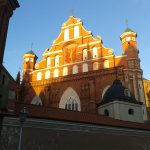
The main altar with Late Baroque forms, made from dark woodInterior of Church of St. Francis and St. BernardineWhile restoring the church, one of the largest mural paintings from the Late Gothic and Renaissance periods was discovered. They depict scenes from the Bible, Franciscan legends and symbolic imagesAll photos are copyrighted by Vladislav B. Sotirovic© Vladislav B. Sotirovic 2020
Continue Reading
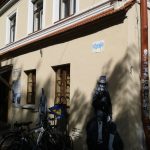
The Galera Gallery in the Užupis Art Incubator also operates there, where exhibitions of various kinds of art are organizedGalera of Užupis is an Alternative art gallery. That is a place similar to the former Christiana district in Copenhagen in DenmarkThe Užupis district and its Art Incubator are separated from the Old Town in Vilnius on three sides by the River Vilnia, and by a high hill on the fourth sideAll photos are copyrighted by Vladislav B. Sotirovic© Vladislav B. Sotirovic 2020
Continue Reading
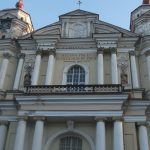
The founder of the church was a Grand Hetman and Vilnius Voivode of the Grand Duchy of Lithuania. The 17th-century church's façade is modest, however the interior is richly ornate with a number of stucco mouldings The church was built to mark the liberation of Vilnius from Moscow (The 1655-1661 War) and the founder's own escape from the hands of rebellious soldiers. The interior was created by the Italians G. P. Perti and G. M. Galli, who decorated it with more than 2,000 stucco mouldings The chandelier was created in 1905 in Riga and represents the Biblical Noah's arkAll photos are copyrighted by Vladislav B. Sotirovic© Vladislav B. Sotirovic 2018
Continue Reading

The church is Gothic, with some Baroque forms that it acquired in the late 18th centuryIn 1812 the church was partly destroyed by the French army that used it as a granary. Since 1864 the church was closed and converted into an archive The church adjoins a monastery, the oldest in Lithuania, whose construction began in Gediminas' times (in 1334)All photos are copyrighted by Vladislav B. Sotirovic© Vladislav B. Sotirovic 2018
Continue Reading

Three crosses are believed to have first been erected on this hill above the Old Town of Vilnius in the 17th century to commemorate a group of 14 Franciscan monks from a nearby monastery who were martyred in the 14th century The monument has changed several times. The present one was built in 1989 to replace one that had been removed by the Soviet authorities in the 1950sOne of the best panoramic views of the Old Town of Vilnius is offered from the Hill of Three CrossesAll photos are copyrighted by Vladislav B. Sotirovic© Vladislav B. Sotirovic 2020
Continue Reading

Christmas Tree decoration at the Cathedral Basilica Square in Vilnius. The belfry is seen in the backgroundChristmas decoration in front of the principal building of the castle complex in Vilnius Old Town - Cathedral BasilicaCathedral Basilica of Vilnius is erected on the place of the pagan altar with a ceasred fire to the pagan god Perkūnas (god of Thunder)All photos are copyrighted by Vladislav B. Sotirovic© Vladislav B. Sotirovic 2019
Continue Reading
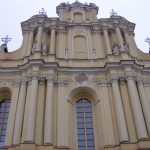
The church received its current form in 1738-1749 after fires in the cityThe church was rebuilted by Vilnius Baroque architect J. K. Glaubitz in the ornate Late Baroque style, and installed 24 altars insite The church bell tower received its current shape in 1737. The bell tower is 68 m tall. It is the tallest building in Vilnius Old TownAll photos are copyrighted by Vladislav B. Sotirovic© Vladislav B. Sotirovic 2018
Continue Reading
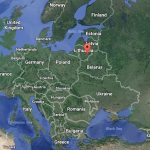
A geographical centre of Europe - 25 km far from Vilnius. From 2015 Summer You will get a special Certificate that you have visited the Geographical center of Europe. Don't miss the chance to get it for freeThe Baltic States of Europe - Estonia, Latvia & LithuaniaVytis (The Knight) - The Coat of Arm of both historical Grand Duchy of Lithuania and present-day the Republic of LithuaniaOrigins of images: Facebook, Twitter, Wikimedia, Wikipedia, Flickr, Google, Imageinjection & Pinterest.Read our Disclaimer/Legal Statement!Donate to Support UsWe would like to ask you to consider a small donation to help our team keep working.
Continue Reading
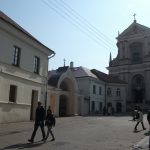
It was built from 1633 to 1654 under the patronage of the Vice-Chancellor of the Grand Duchy of Lithuania, Stephen Pac. Most probably the exterior was designed by Italian Constantino Tencalla. The exterior of the Church of St. Theresa is designed according to the models of Roman architecture: it is noble and harmonious, built along with the vertical principle with volutes and side obelisksThe St. Theresa Church (left) is located at Dawn St. nearby the Gate of Dawn (at the top) that is famous for its miraculous image of the Mother of Mercy (or Mary of Vilnius)The chapel is built by the Barefoot Carmelite monks for the miraculous picture of Mary of Vilnius in 1671. The St. Theresa Church was built with a large Barefoot Carmelite Monastery, established near Vilnius' defensive wall All photos are copyrighted by Vladislav B. Sotirovic© Vladislav B. Sotirovic 2018
Continue Reading

The church is an elegant late Baroque monument built-in 1702-1730. It is made even more attractive by an asymmetrical monastery ensemble in 1713-1730The towers date from the mid-18th century. They end in rococo domes with lanterns Both the church and the monastery belonged to the Jesuit Order. The monastery was intended for the Jesuit monks with 10 years of service experience seeking to become professed Jesiuts, i.e., to make the last ceremonial vowes All photos are copyrighted by Vladislav B. Sotirovic© Vladislav B. Sotirovic 2019
Continue Reading
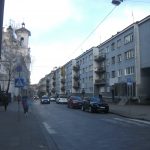
The Górecki estate in Dominikonų St. 15 is a two-storey Gothic house. It was built on this site in the late 15th or early 16th century. In 1649 it was bought by Vilnius UniversityZawisha estate is known since late 16th or early 17th century. It was renovated in the late 18th century. The façade is strictly symmetrical, done in the style of early Classicism. Renaissance vaults have survivedDominikonų Street is dominated by the Roman Catholic Church of the Holy Spirit and the Dominican Monastery (1501)All photos are copyrighted by Vladislav B. Sotirovic© Vladislav B. Sotirovic 2020
Continue Reading

The Church of the Assumption is one of the Vilnius' most beautiful Baroque churches and most mature building of the Vilnius' Baroque schoolConstruction on the church began in 1695 and the final work was carried out by Vilnius' Baroque architect Johann Christoph Glaubitz (1700-1767) in 1750-1756The front façade is adorned by a domical rotunda vestibule, and two elegant towers with clocks All photos are copyrighted by Vladislav B. Sotirovic© Vladislav B. Sotirovic 2019
Continue Reading

Martynas Mažvydas National Library of Lithuania is a national cultural institution open to all users, active in the areas of dissemination of information, culture, science, and education, performing library activities and ensuring implementation of the national information policy falling within its competence The mission of the library is to be the Lithuanian space of knowledge-creating value for the public The vision of the library: to become an integral part of the state's information policy, culture, education, science, and economic progressAll photos are copyrighted by Vladislav B. Sotirovic© Vladislav B. Sotirovic 2019
Continue Reading
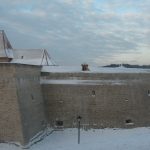
The Bastion is comprised of a tower, cannon room and 48 m. the long corridor connecting it with the towerThe walls and moats of the Bastion were excavated in 1965-1970, and the canon room was renovated in 1985-1986 The entire Bastion is converted into a museum, and since 1987 it houses an exhibition of defensive fortifications and weaponryAll photos are copyrighted by Vladislav B. Sotirovic© Vladislav B. Sotirovic 2019
Continue Reading
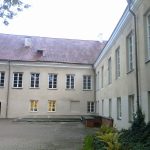
Earlier in this courtyard was an artillery school. The Rector of the Vilnius University S. Malewski as well as lived in the building of this courtyardA poet Adam Mickiewicz spent much time with his son in their house in 1818-1819. As the first-year student, he lived in one of those buildings. Later, it became a gathering place of the PhilomatsThe courtyard is surrounded by two-storey buildings. A Gothic façade of one of them is facing Pilies StreetAll photos are copyrighted by Vladislav B. Sotirovic© Vladislav B. Sotirovic 2023
Continue Reading
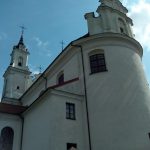
In 1695 the Trinitarians set up a community on the right bank of the River Neris just to the north of Vilnius. Therefore, the place is known as Trinapolis (a city of the Trinitarians)In 1750-1760 Trinapolis was reconstructed in the late Baroque style. It was a summer residence of Vilnius bishopsIn Soviet times the church was closed down. Today, the monastery is used as a retreat house by an order of nuns, and the church is not regularly openAll photos are copyrighted by Vladislav B. Sotirovic© Vladislav B. Sotirovic 2022
Continue Reading
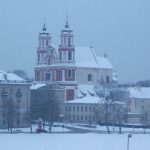
The present church was built in the late 17th century, after its predecessor was burnt down in the 1655 during the war with Russia. The church was completed only in the middle of the 18th century The nave is 24 metres high, making it the tallest in Vilnius; and its length is the same, with accounts for its concentrated appearance when viewed from the sideIn the north tower is a particularly ornate chapel, dedicated to the Dominican St. Hyacinth, with frescoes depicting scenes from his life. The fresco above the entrance depicts the Virgin Mary and Angels. The church was returned to the Dominicans in 1993All photos are copyrighted by Vladislav B. Sotirovic© Vladislav B. Sotirovic 2018
Continue Reading

The entrance to the courtyard in which the Judenrat (Jewish Council) was located during WWII in the Large Jewish Ghetto in VilniusThe building of the Judenrat which functioned from September 1941 to September 1943 within the Large Jewish Ghetto that was formed around Rūdninkų SquareHebrew inscription above the windows on a former Jewish shopAll photos are copyrighted by Vladislav B. Sotirovic© Vladislav B. Sotirovic 2019
Continue Reading
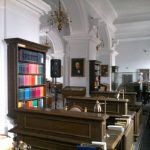
The architect whose name is most closely associated with Vilnius University is the Jesuit Tomas Zhebrauskas who founded (together with Elžbieta Oginskaitė-Puzinienė, the daughter of the famous manor owner Mykolas Oginskis) and designed the observatory, in 1753. The White Hall belongs to the observatory The astronomical observatory of Vilnius University is one of the oldest in Europe and the oldest in the former Polish-Lithuanian Commonwealth. It was famous in Europe for its astronomers and their works until it was closed after the fire of 1876The White Hall today is, in fact, a reading room of the Library of Vilnius UniversityAll photos are copyrighted by Vladislav B. Sotirovic© Vladislav B. Sotirovic 2023
Continue Reading
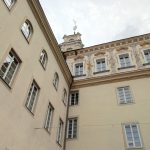
All photos are copyrighted by Vladislav B. Sotirovic© Vladislav B. Sotirovic
Continue Reading
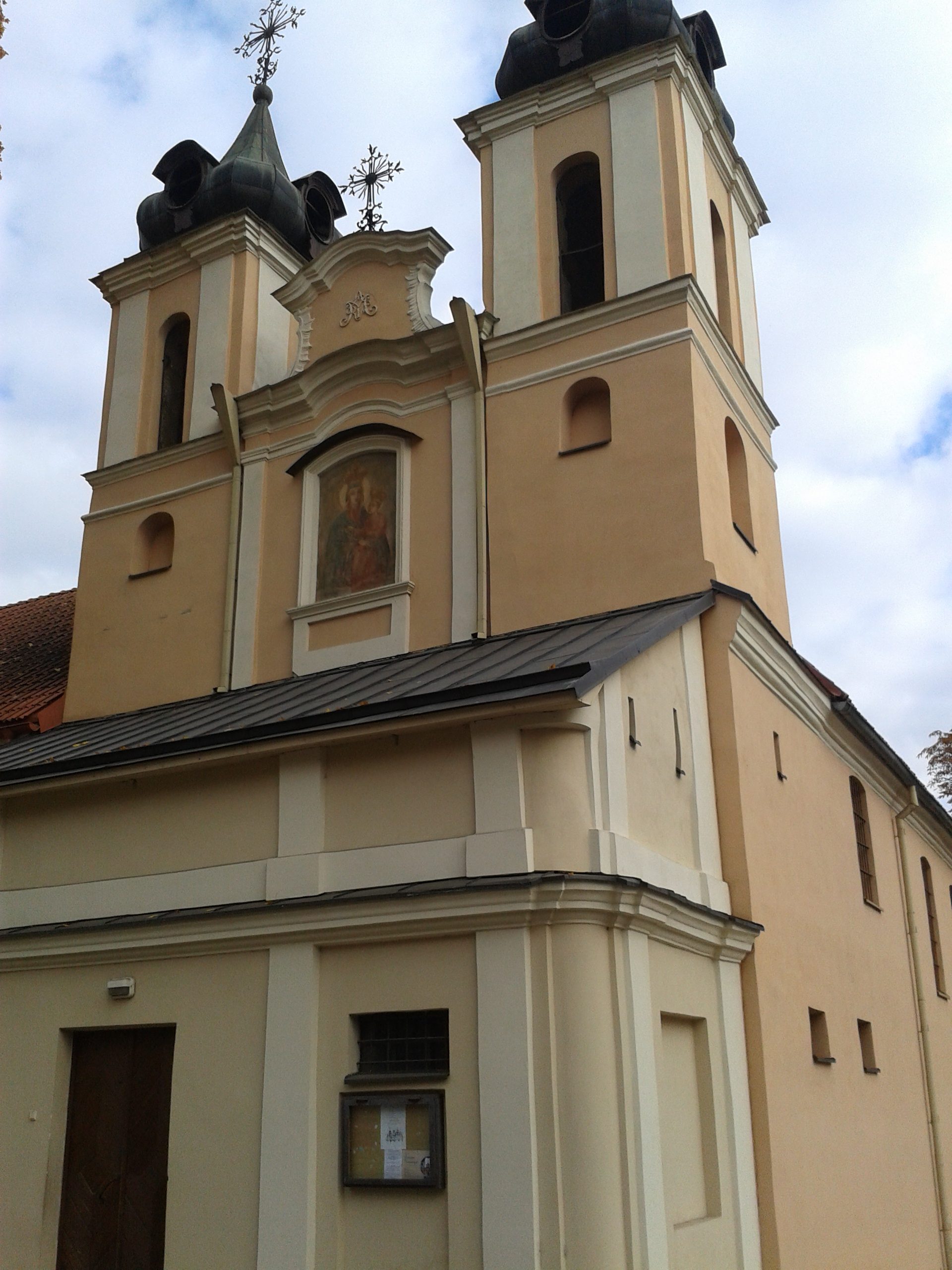 According to legend, the monastery and wooden church were built circa 1332 in the burial spot of the Franciscan monks that had been martyred by Lithuanian pagans
According to legend, the monastery and wooden church were built circa 1332 in the burial spot of the Franciscan monks that had been martyred by Lithuanian pagans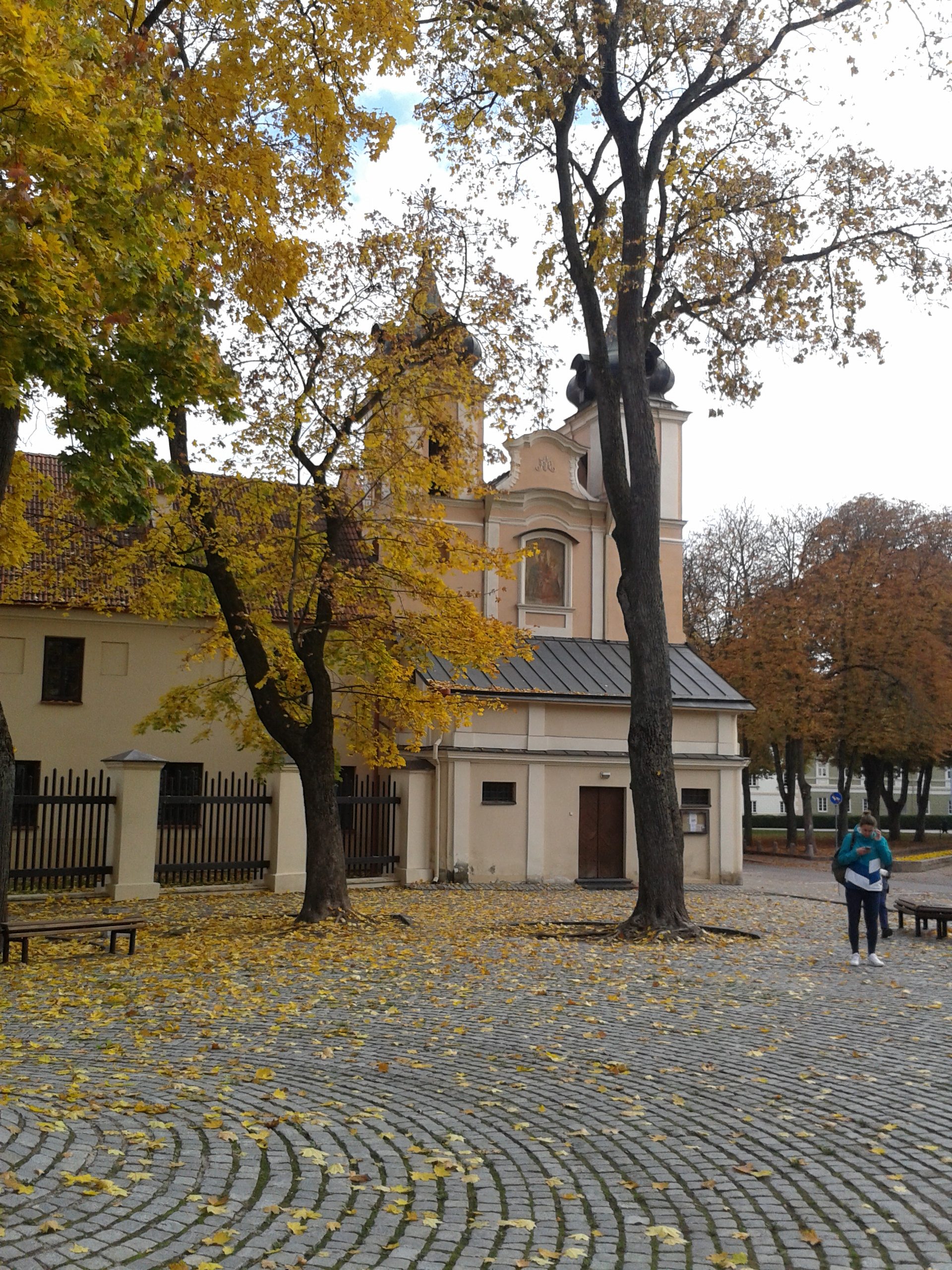 The building complex is formed in the mid-18th century. Today, the church possess six Late Baroque-style altars, with the main altar having a picture of the Holy Virgin Mary that is considered to be miraculous. A copy of the picture is painted on the façade in 1742
The building complex is formed in the mid-18th century. Today, the church possess six Late Baroque-style altars, with the main altar having a picture of the Holy Virgin Mary that is considered to be miraculous. A copy of the picture is painted on the façade in 1742 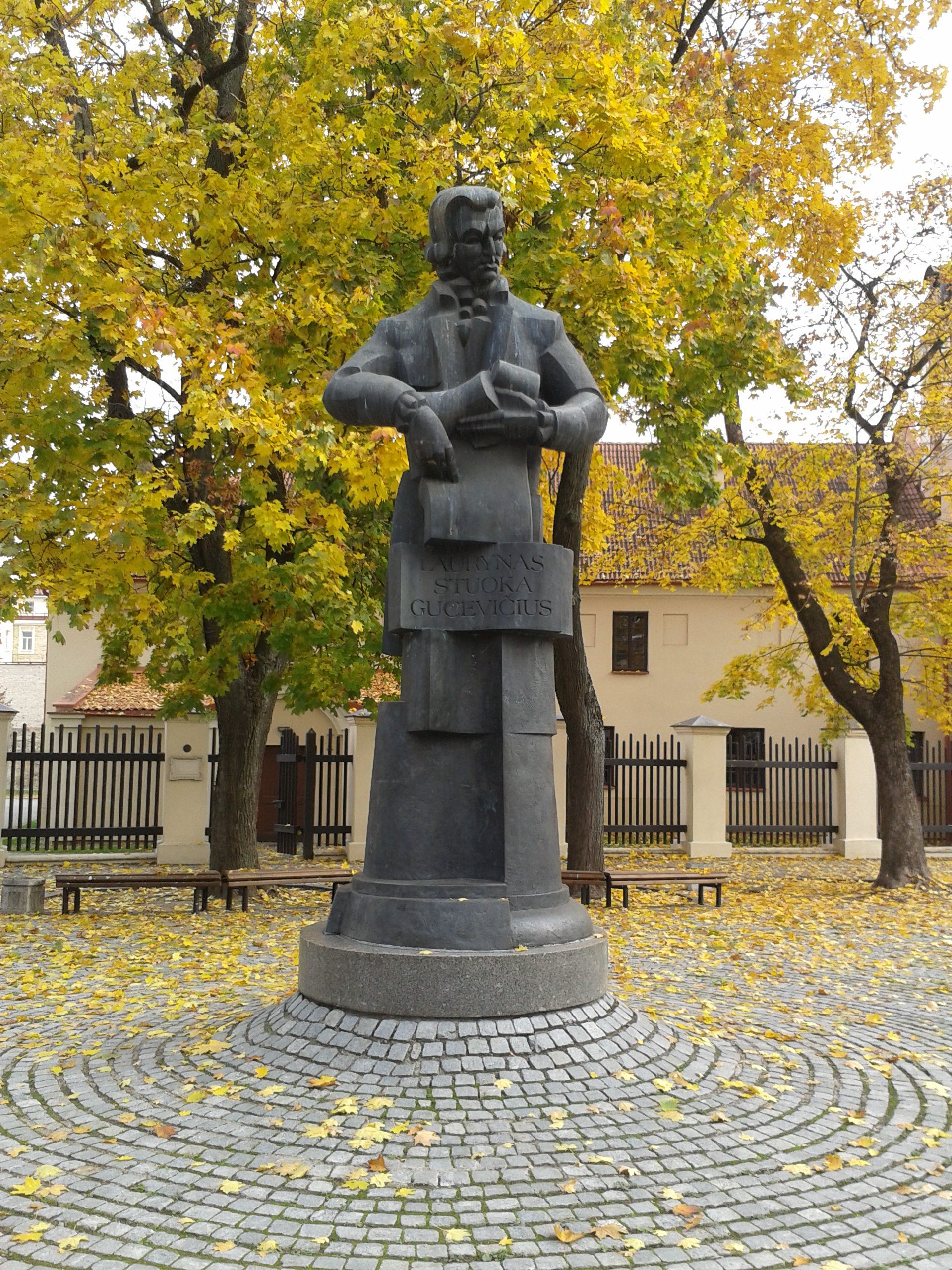 The monument to famous Lithuanian neo-Classicist architect Laurinas Gucevičius, the founder of Vilnius neo-Classicism, is erected in 1994 in the square in front of the church.
The monument to famous Lithuanian neo-Classicist architect Laurinas Gucevičius, the founder of Vilnius neo-Classicism, is erected in 1994 in the square in front of the church. 






















